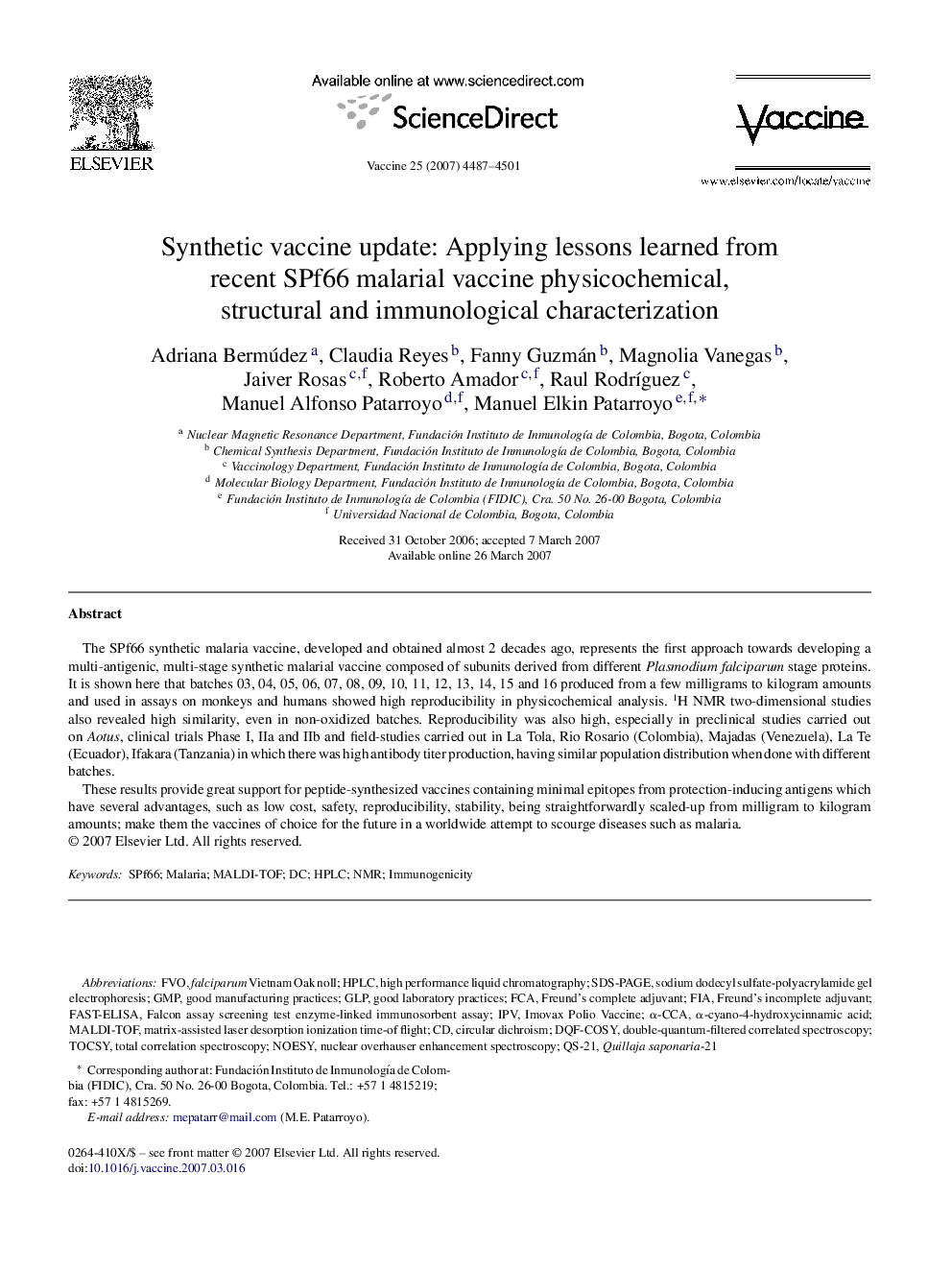| Article ID | Journal | Published Year | Pages | File Type |
|---|---|---|---|---|
| 2409098 | Vaccine | 2007 | 15 Pages |
The SPf66 synthetic malaria vaccine, developed and obtained almost 2 decades ago, represents the first approach towards developing a multi-antigenic, multi-stage synthetic malarial vaccine composed of subunits derived from different Plasmodium falciparum stage proteins. It is shown here that batches 03, 04, 05, 06, 07, 08, 09, 10, 11, 12, 13, 14, 15 and 16 produced from a few milligrams to kilogram amounts and used in assays on monkeys and humans showed high reproducibility in physicochemical analysis. 1H NMR two-dimensional studies also revealed high similarity, even in non-oxidized batches. Reproducibility was also high, especially in preclinical studies carried out on Aotus, clinical trials Phase I, IIa and IIb and field-studies carried out in La Tola, Rio Rosario (Colombia), Majadas (Venezuela), La Te (Ecuador), Ifakara (Tanzania) in which there was high antibody titer production, having similar population distribution when done with different batches.These results provide great support for peptide-synthesized vaccines containing minimal epitopes from protection-inducing antigens which have several advantages, such as low cost, safety, reproducibility, stability, being straightforwardly scaled-up from milligram to kilogram amounts; make them the vaccines of choice for the future in a worldwide attempt to scourge diseases such as malaria.
